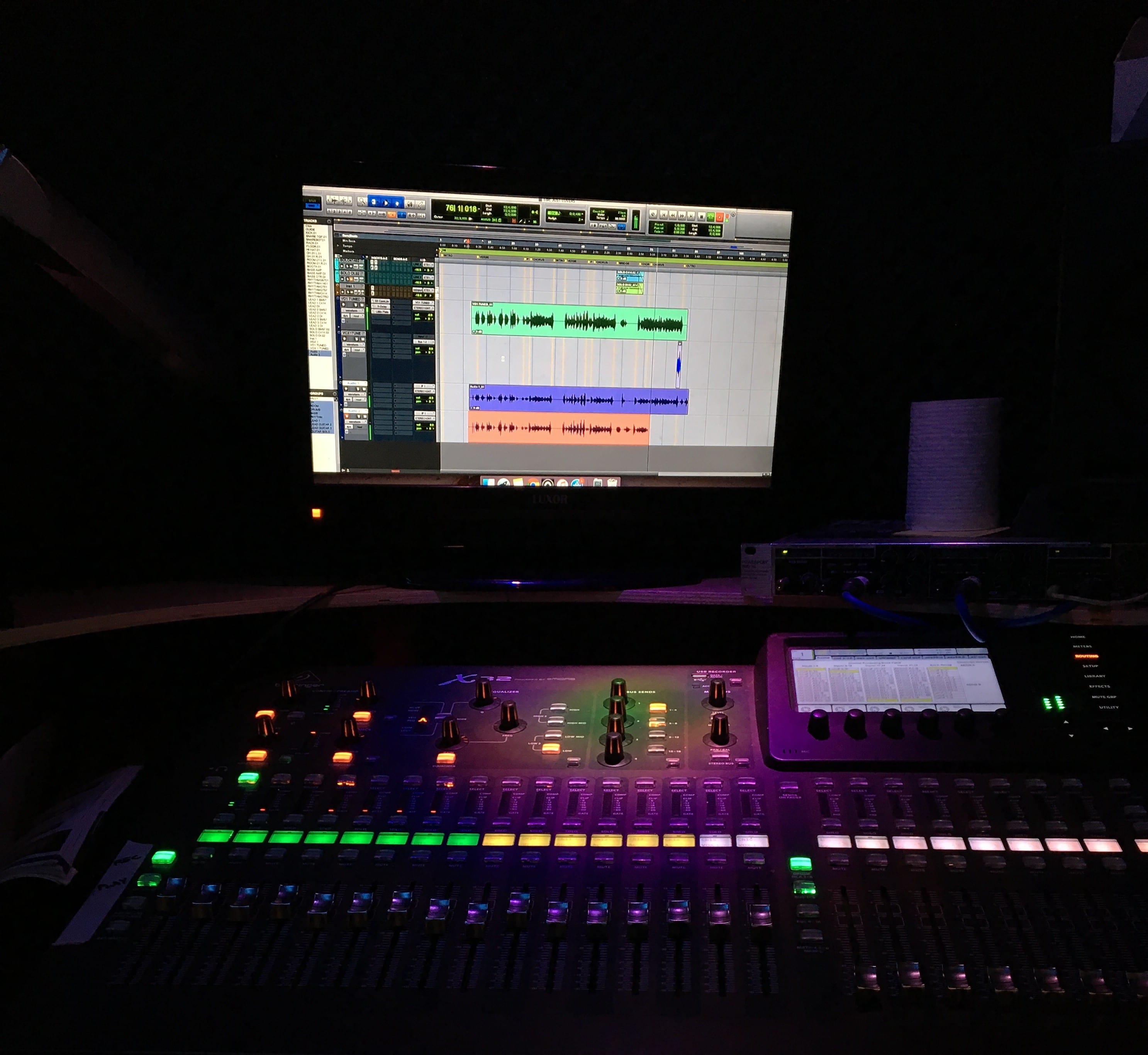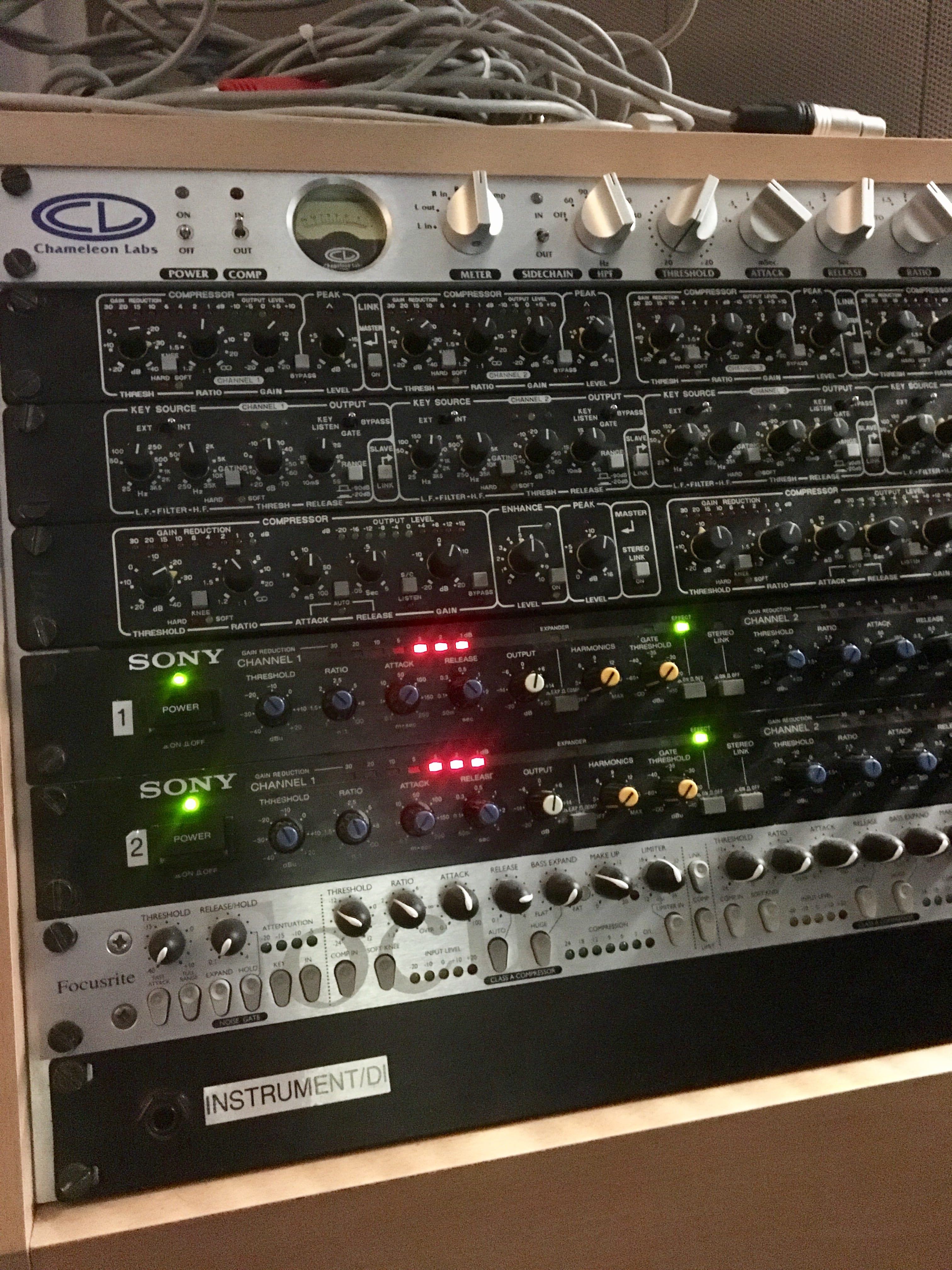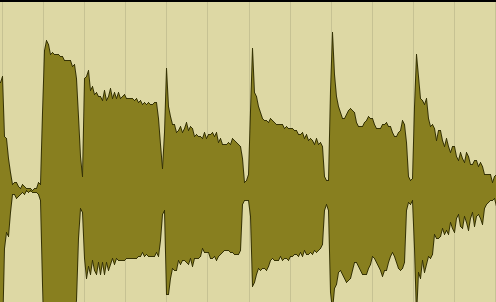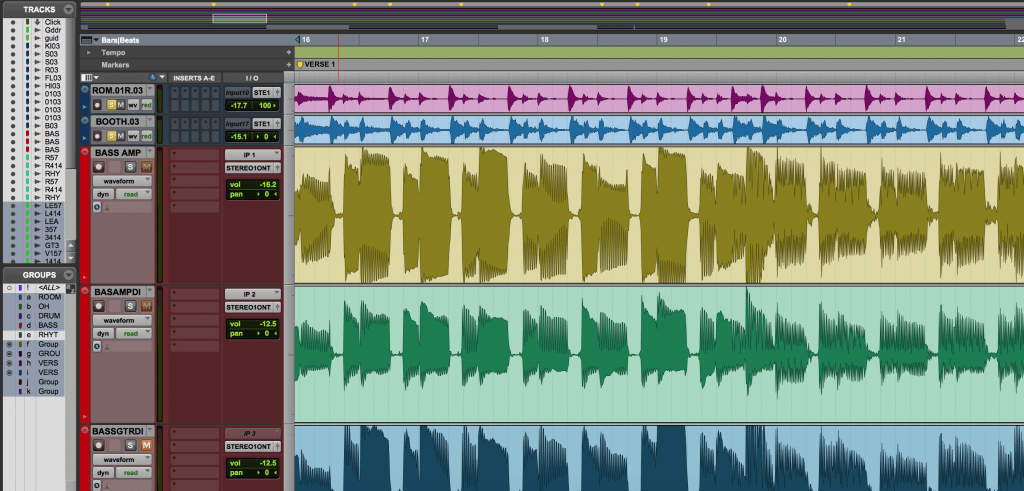For todays session, our main focus was to track all of the drums for this project. Ensuring that i also covered my first learning outcome, I wanted to make sure that I incorporated the use of some outboard compression and desk EQ when recording into Pro Tools.
Prior to the session, I spoke to Dave about the kind of style he wanted for this project as well as some of his influences. I also asked him to send me some demos so i had a rough understanding of how the songs already sounded and how we could evolve them in the recording sessions. These demos also provided essential reference points for the session drummer and really aided the efficiency of the drum tracking session.
When mic-ing up the drum kit, I really wanted to make sure that I added a room mic down the bottom of the corridor outside of the live room. Due to its reflective nature compared to the live room, this added a nice ambience to the sound of the drums and when compressed, provided a lot of excitement to the overall mix.
Once I had mic-ed up the drums accordingly, I began to incorporate the use hardware compression and EQ to mould the sound of them. One thing to keep in mind here is that the majority the of choices I made here were subtle for two reasons; there was a lot of low end spill bleeding into the control room from the live room which made it difficult to the perceive some of the frequencies I was hearing. Keeping them subtle would also give me more room to make further dynamic and EQ changes in the mix stage when i’m in an environment where I am able to hear different frequencies more accurately.
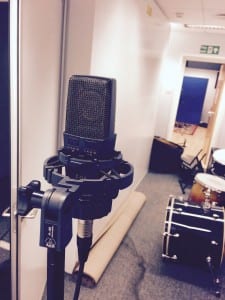
With the kick drum, I began by sweeping the frequency range to remove some the ‘mud’ and ‘boxy’ sounds within the drum. This is a technique also applied by Joe Chiccarelli but instead he uses an API graphic EQ as oppose to the EQ on the desk. I then used a similar technique for both snare drum mics however this time it was to eliminate some of the ringing and overtones coming from the drum. This is a technique I found on drumlessons.com and have found it very effective in improving the tonal qualities of the snare drum. For the toms, I used reductive EQ on the lower mids but also boosted some of the high end to give the drum more ‘point’ and attack. This technique is also utilised by Victor Guidera at drumlessons.com. Finally, when it came to the using desk EQ for the overheads, I applied a HPF to both of the mics at the input gain stage and then applied a slight boost to the high shelf at around 12khz to give the overheads a little more air.
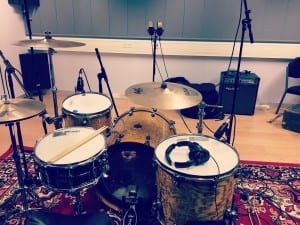
When it came to using hardware compression, I decided to use the Sony srp-l210 on the kick drum and snare drum and use the Drawmer DL241 for the far room mic. From my research, I have found a lot of ways that producers utilise hardware compression into their production and I chose the best ones to suit my scenario and the project. Jacquire King, producer of James bay’s debut album, spoke to sound on sound magazine about his use of compression on the kick and snare and how he used it to help the drums sit in the mix better. He uses a low ratio with about 3db of compression to prevent sucking the tone out of the drum allowing them to be more stable whilst adding focus. With this in mind, I also used this method to control the dynamic range of the snare and the kick drum.
Kick drum compression:

Snare drum compression:
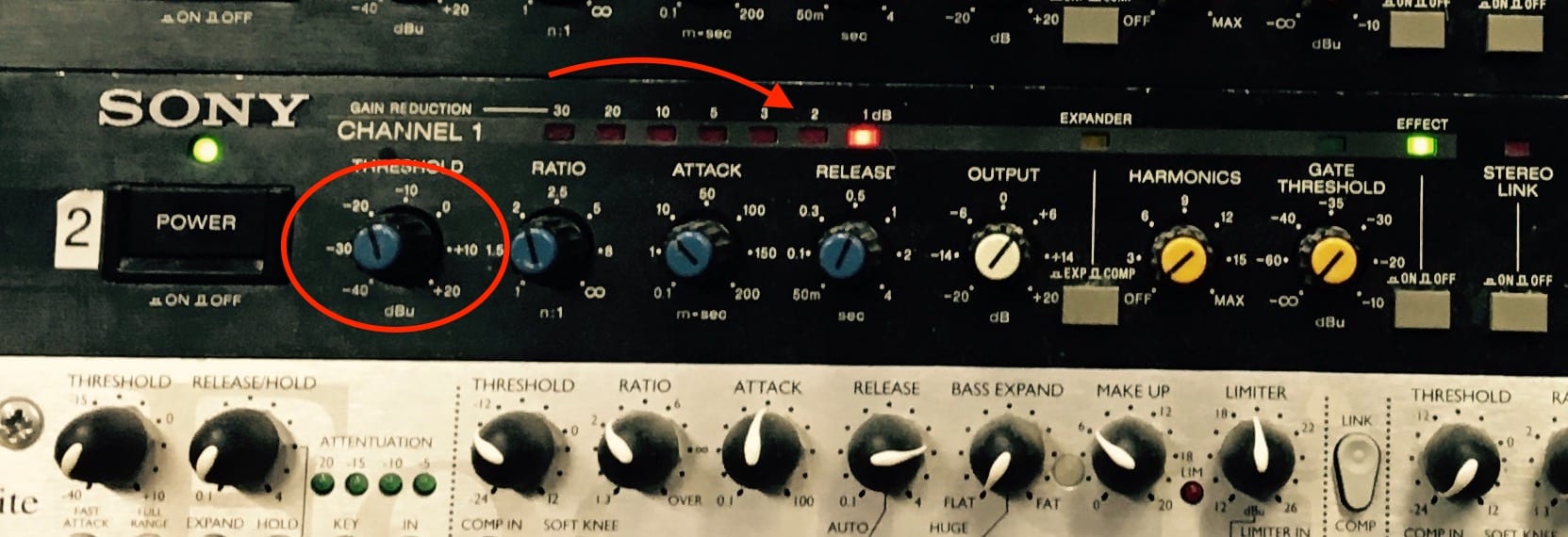
For the far room mic, I kept the ratio more or less the same however I decided to be a little more aggressive with the threshold. This resulted in the room mic slamming a little more and when mixed in with the rest of the drums, not only did it add ambience, it also added a lot more excitement.


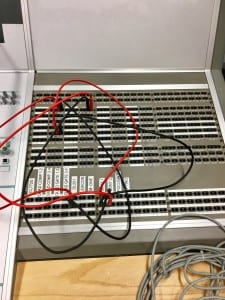
Recording a band with Joe Chiccarelli
How to EQ a snare drum – Drum Lessons
How to EQ toms – Drum Lessons
Jacquire King: Producing James Bay
